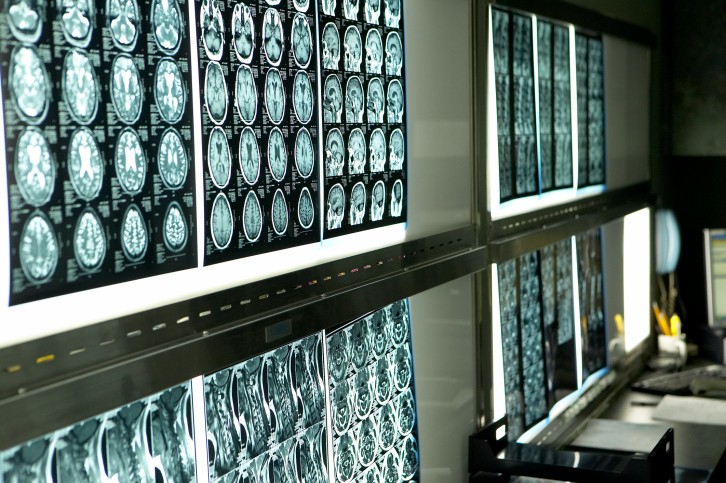Cedars-Sinai Joins NIH Study of Early Childhood Development
New Consortium, Funded by NIH, Will Focus on How Biological and Environmental Exposures, including Opioids, Marijuana, Alcohol and Tobacco, Affect Development and Overall Health
Cedars-Sinai is joining a nationwide study to investigate how children's development is impacted by biological and environmental exposures, especially to opioids, marijuana, alcohol and tobacco, before and shortly after birth. The goal is to develop insights that can inform public policy to improve the health of children across the nation.
The HEALthy Brain and Child Development (HBCD) Study of the National Institutes of Health (NIH) will establish a large cohort of pregnant people and follow them and their children for at least 10 years. Findings from this cohort will provide a template of normative neurodevelopment in order to assess how prenatal and perinatal exposures to substances and environments may alter children’s developmental trajectories. This research infrastructure can also be leveraged for urgent health needs, such as the current impact of the COVID-19 pandemic on development, or future health and environmental crises.
"This study is important because little is known about the typical brain development of children in their first decade—a period that lays the foundation for the whole life—and even less about how prenatal and perinatal drug exposures might affect that process," said Wei Gao, PhD, director of Neuroimaging Research at the Biomedical Imaging Research Institute at Cedars-Sinai and professor of Biomedical Sciences. "The earlier we can identify children at risk for problems, the more quickly we can begin to intervene and optimize outcomes."
decade—a period that lays the foundation for the whole life—and even less about how prenatal and perinatal drug exposures might affect that process," said Wei Gao, PhD, director of Neuroimaging Research at the Biomedical Imaging Research Institute at Cedars-Sinai and professor of Biomedical Sciences. "The earlier we can identify children at risk for problems, the more quickly we can begin to intervene and optimize outcomes."
Gao is a world-renowned expert in applying magnetic resonance imaging (MRI) to reveal the secrets of early brain development in children. In a pioneering 2018 study with the University of North Carolina at Chapel Hill, he showed how growth rates of brain circuits in infancy may help predict what a child's intelligence and emotional health could be when the child turns 4, potentially allowing for early intervention. His work in developing an MRI-compatible crib to improve the imaging process was recently highlighted by the NIH on its website.
Gao is the project director and principal investigator for this initial five-year, $5.8 million NIH grant, announced today, to support research for the HBCD study that will be conducted by Cedars-Sinai and two other institutions and enroll pregnant women and their children in the Los Angeles region. Cedars-Sinai is one of 25 such research sites across the nation in the NIH Healthy Brain and Child Development Consortium.
 Gao's co-principal investigators on the grant are Kimberly Gregory, MD, MPH, professor and director of the Division of Maternal Fetal Medicine in the Department of Obstetrics and Gynecology and Helping Hand of Los Angeles—The Miriam Jacobs Chair in Maternal Fetal Medicine at Cedars-Sinai; Lynne Smith, MD, investigator at The Lundquist Institute and professor and chair of the Department of Pediatrics at Harbor-UCLA Medical Center and associate director of the Clinical and Community Research Resources Program of the UCLA Clinical and Translational Science Institute at The Lundquist Institute; and Scott Johnson, PhD, professor of Psychology, Psychiatry & Biobehavioral Sciences and director of the UCLA Baby Lab.
Gao's co-principal investigators on the grant are Kimberly Gregory, MD, MPH, professor and director of the Division of Maternal Fetal Medicine in the Department of Obstetrics and Gynecology and Helping Hand of Los Angeles—The Miriam Jacobs Chair in Maternal Fetal Medicine at Cedars-Sinai; Lynne Smith, MD, investigator at The Lundquist Institute and professor and chair of the Department of Pediatrics at Harbor-UCLA Medical Center and associate director of the Clinical and Community Research Resources Program of the UCLA Clinical and Translational Science Institute at The Lundquist Institute; and Scott Johnson, PhD, professor of Psychology, Psychiatry & Biobehavioral Sciences and director of the UCLA Baby Lab.
The longitudinal HBCD study will collect data on pregnancy and fetal development; infant and early childhood structural and functional brain imaging; anthropometrics; medical history; family history; biospecimens; and social, emotional and cognitive development. Knowledge gained from this research will help identify factors that confer risk or resilience for known developmental effects of prenatal and postnatal exposure to certain drugs and environmental exposures, including risk for future substance use, mental disorders, and other behavioral and developmental problems.
The award to Cedars-Sinai is part of the Phase II HBCD Study, in which a fully integrated, collaborative infrastructure will support the collection of a large dataset that will enable researchers to analyze brain development in opioid-exposed and non-drug-exposed infants and children across a variety of regions and demographics.
HBCD is funded by 10 institutes and offices at the National Institutes of Health, and the Helping to End Addiction Long-termSM Initiative, or NIH HEAL InitiativeSM, and is led by the National Institute on Drug Abuse.
Read more from the Cedars-Sinai Blog: Baby’s First Map




